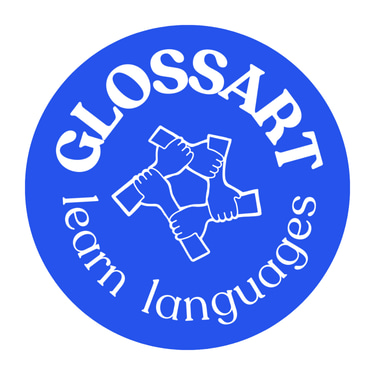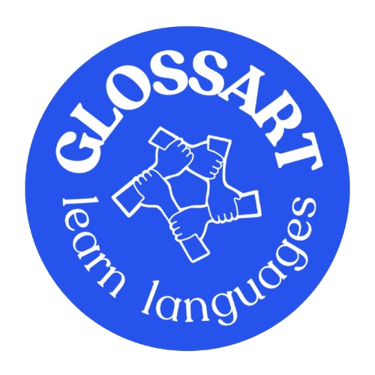Transform Your World with Language Learning at GlossArt Languages!
The Limits of Artificial Fluency: What AI Can’t Teach the Human Mind
Discover how artificial intelligence can enhance but never replace the human process of learning a language. Explore what AI does best, what it can’t feel or teach, and why true fluency begins in the human heart and mind
Evangelia Perifanou
10/21/20253 min read


How AI Can (and Can’t) Help You Learn a Language
The Promise of Machines and the Poetry of Minds
Artificial Intelligence has entered classrooms, conversations, and even the quiet moments of self-study.
It corrects our grammar, pronounces words for us, and keeps perfect track of our progress.
But there’s something paradoxical about it:
AI can simulate the process of learning, yet not experience it.
It can produce language, but not live in it.
At Glossart Languages, we welcome technology as a companion , not a replacement. Because while AI might teach you to speak, only humanity can teach you to mean it.
The Power of Artificial Intelligence in Language Learning
AI’s brilliance lies in its precision, its memory, and its tireless feedback.
In the neural circuits of machines, we find the reflection of our own , except theirs don’t feel fatigue, fear, or doubt.
1. The Mirror of Data
Through machine learning, AI observes your errors, predicts your needs, and adapts your lessons.
It personalizes your progress , like a mirror that reflects not your face but your mind.
Each correction reinforces the brain’s myelination process the insulation of neural pathways that makes recall faster and more fluid.
Consistency, not genius, builds fluency.
2. The Rhythm of Repetition
AI excels in spaced repetition, a method long validated by cognitive psychology.
The more systematically a learner revisits a word or rule, the more the hippocampus and neocortex collaborate to move knowledge from short-term memory to permanence.
The machine ensures you remember but it doesn’t teach you why a word matters.
3. The Precision of Pronunciation
Speech-recognition algorithms now detect subtleties of tone and stress that even skilled teachers might overlook.
By listening to yourself through the ear of a machine, you train both auditory and motor cortices the neurological duet behind clear speech.
What AI Can’t Teach
1. The Soul of Speech
AI can reproduce syntax; it cannot sense silence.
It can deliver a perfect phrase; it cannot feel the tremor of shyness, or the pride of saying something beautiful in a language that is not yours.
Language is not code. It’s emotion shaped into sound.
Without emotion, words are architecture without music.
Neuroscientists such as Antonio Damasio and Lisa Feldman Barrett remind us that emotions are not interruptions to thought , they are the foundation of cognition itself.
And AI, however eloquent, has none.
Language is born in the body , in breath, tone, heartbeat, and silence.
It carries history, memory, and pain.
AI speaks correctly, but never truthfully, because it has no inner world to express.
As philosopher Hubert Dreyfus once wrote:
“Intelligence without embodiment is an imitation of understanding, not understanding itself.”
2. The Courage to Be Imperfect
Fluency is born in vulnerability , the moment you make mistakes and laugh at them.
AI never hesitates, never blushes, never doubts.
But those fragile, human moments are where memory deepens.
Emotion seals the knowledge that algorithms can only arrange.
3. The Spark of Meaning
AI generates language from patterns.
Humans create language from purpose.
A machine can tell you how to say I love you in a hundred languages but it will never know what it means to say it once and mean it.
Human conversation, by contrast, is not exchange it’s communion.
When two people speak from curiosity or affection, neurons fire synchronously in both brains , a phenomenon known as interpersonal neural resonance (University of California, 2018).
That resonance, that shared vibration, is where true understanding begins.
No algorithm can experience that moment of mutual presence —
when language becomes bridge, and communication becomes trust.The Mindful Symbiosis
Technology and humanity need not compete , they complete each other.
The future of learning is symbiotic:
machines offering structure, and humans offering soul.
AI provides the rhythm; you provide the reason.
It can guide your study but not your story.
The true art of language emerges where data meets desire.
4. The Art of Thinking
AI processes; it doesn’t reflect.
It collects , it doesn’t contemplate.
A human mind, in contrast, not only learns but questions the way it learns.
Philosopher John Searle described this in his famous “Chinese Room” thought experiment:
a computer can manipulate symbols of a language perfectly, yet have no understanding of what those symbols mean.
That’s the difference between speaking and thinking.
The miracle of human learning lies in metacognition ,
our ability to observe our thoughts, feel doubt, and search for truth.
That’s something no machine, however advanced, can simulate. The Human Brain: The Original Intelligence
Every time you learn, your neurons whisper to one another, weaving a new network of meaning.
Unlike a machine, your brain forgets and in forgetting, it learns humility.
Unlike a machine, it doubts and in doubt, it discovers creativity.
AI organizes; the human mind transforms.
It is the only intelligence that can fall in love with an idea.
The Takeaway
AI can teach you words.
Only you can turn them into a voice.
It can train your memory.
Only you can give memory a heart.
In the future of language learning, machines will multiply efficiency
but the miracle of fluency will still belong to the human being who dares to feel, to connect, and to understand.
At Glossart Languages, we embrace AI as an ally but we remain loyal to what no algorithm can replace:
the beauty of human curiosity.
#GlossartLanguages #AIinEducation #LanguageLearning #HumanConnection #CognitiveScience #Neuroplasticity #DigitalFluency #ArtificialIntelligence #MindfulLearning #LearnLanguages #BilingualMind


